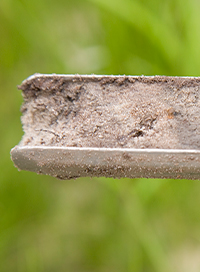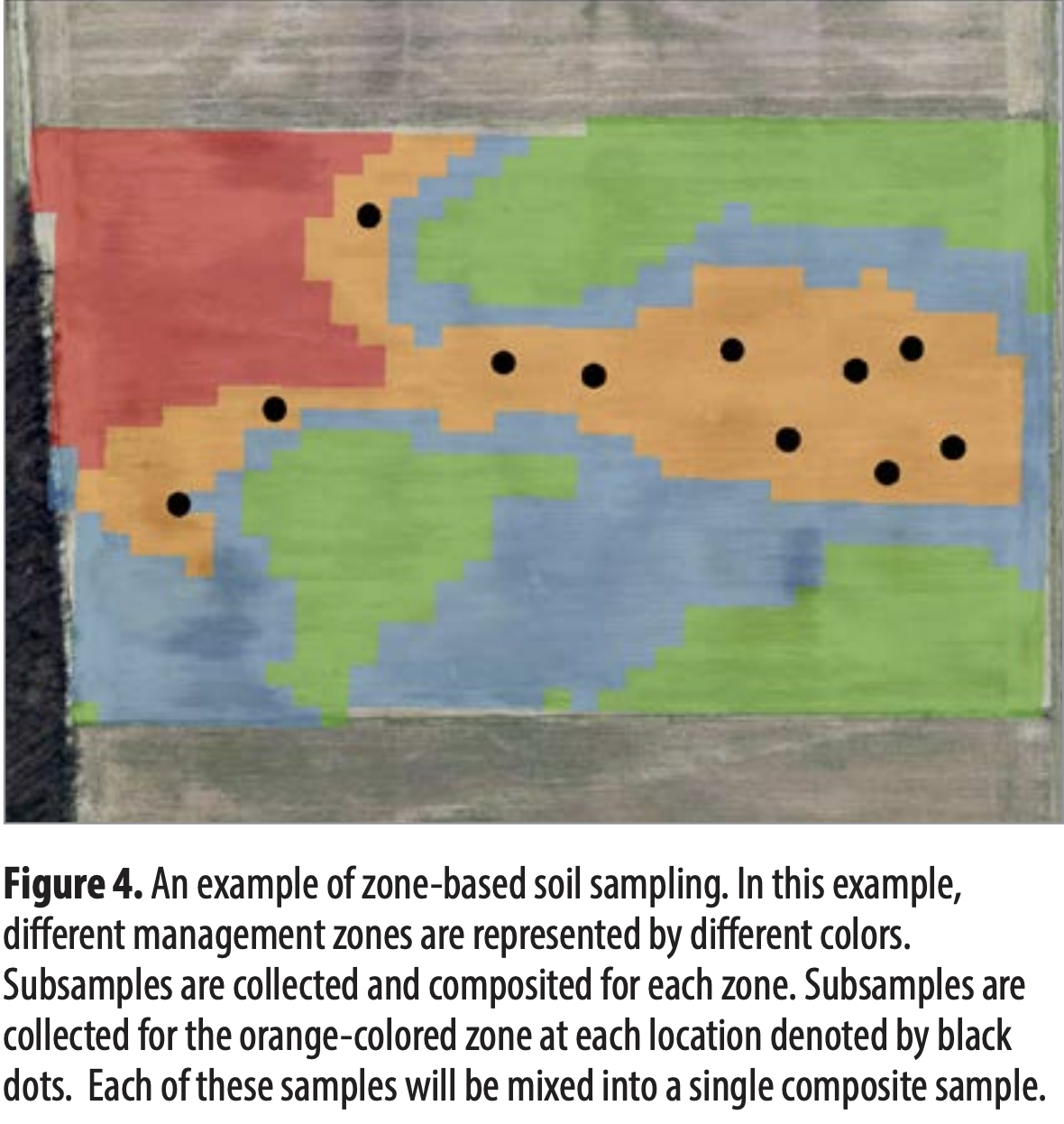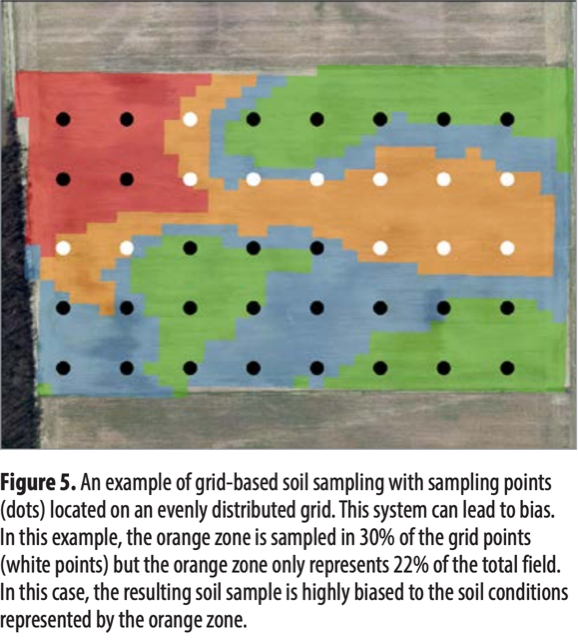 Feeding the soil at the right rate, timing, placement and source to optimize economic return on your corn crop starts with good soil sampling. But which technique works best--grid or zone soil testing?
Feeding the soil at the right rate, timing, placement and source to optimize economic return on your corn crop starts with good soil sampling. But which technique works best--grid or zone soil testing?
Grid Versus Zone
Pulling soil cores at regular intervals from a field using a straight line 2.5-acre grid (8 to 10 cores per grid) will improve fertilizer efficiency compared to composite testing. It's often a grower’s first step with variable-rate fertility, but it has inherent weaknesses (see chart) compared to management zones.

Management zones are a better choice than grids when a farmer has a working history of the field, says Greg LaBarge, Ohio State University field specialist in agronomic systems. By overlaying topography, yield map data over time, soils map and other remote sensing data, a farmer can define high, medium and low-yielding zone patterns in a field.”
Soil sample points should be taken randomly within each management zone, with 10 to 15 cores in zones up to a 25-acre area (often 12 acres or less in size). These points should be georeferenced to compare sample result trends over time, aiding fertilizer recommendation program effects on soil test levels, LaBarge adds.
Agvise Laboratories examined soil test data from over 1,000 fields in its database that used between 3 and 8 samples per zone. It discovered that the difference between the high and low testing zone gets larger with more samples per zone. The more samples per zone, the more you learn about nutrient status.
Soil Sample Accuracy Is Critical
Regardless of your grid or zone strategy, be sure to avoid sampling in problem areas. These include end-rows or heavy-traffic areas, eroded areas, wet spots or depressions, locations of past farmsteads or feedlots, areas within 100 feet of a road, and areas where lime is stored before application.
The time of year to sample soil can be either spring or fall; just be consistent every other year or a maximum of every four years. Fields should be in the same crop when sampled to reduce the temporal variability of test results. Also, keep the sampling location and depth consistent.
Obviously crop yield goals, existing soil nutrient levels and other factors help determine the proper rate in a fertilizer prescription. Soil labs offer base recommendations for mobile nutrients like nitrogen and sulfur. For immobile nutrients like phosphorus, potassium, magnesium and zinc, recommendations are based on current nutrient levels and crop grain removal rates.
Soil Factors Influence Weed Management
When examining soil variabilities in a field, soil-applied herbicides can be impacted by soil texture, organic matter and pH. All should be considered when determining herbicide rates and how they could vary between management zones.
Heavy soils with higher clay content can tie up herbicides, requiring a higher rate than lighter or coarse-textured soils. Organic matter (OM) levels can lead to further refinement of herbicide rates, since fine OM particles known as humus can tie up more herbicide than clay. And if soil pH varies, reduced weed control can also occur if rates are not adjusted, especially with chemistries such as triazine, clopyralid or flumetsulam.
Content Provided by DTN/Progressive Farmer
The More You Grow
Find expert insights on agronomics, crop protection, farm operations and more.
